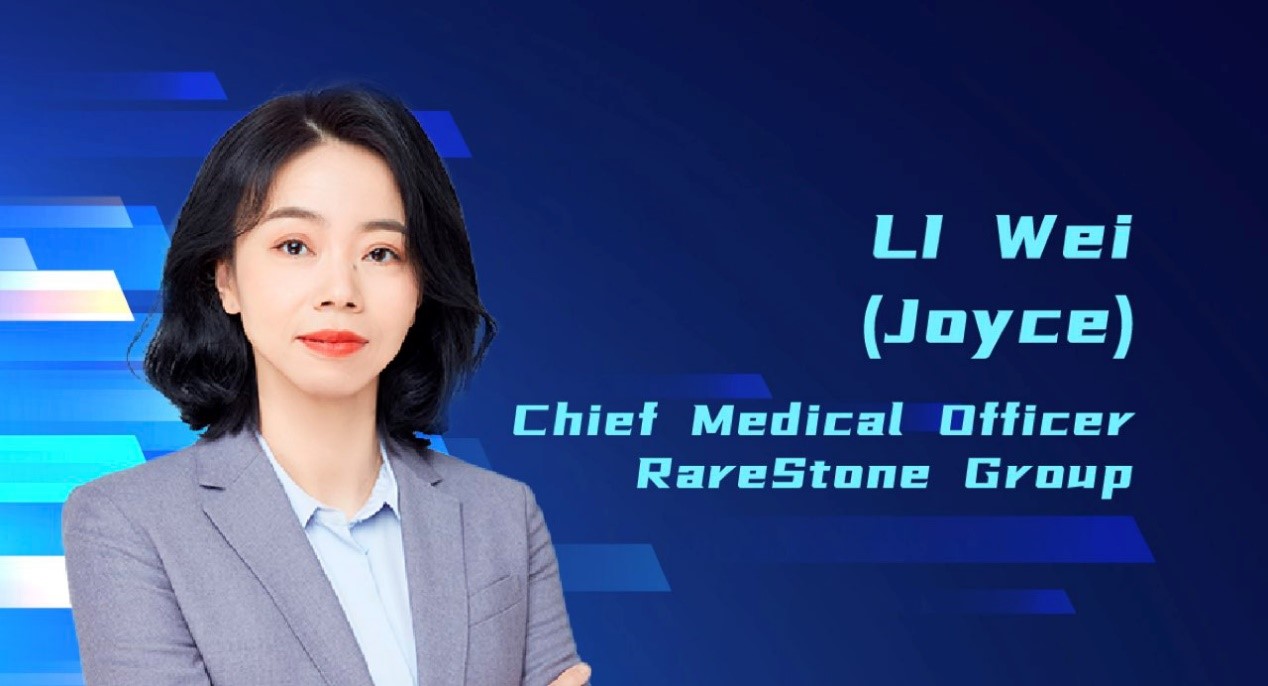RareStone Group’s Li Wei: High-quality data to unleash the enormous potential of real-world research in medicine discovery and development
2022-01-25
In the historical evolution of global medicine regulation, the usage of real-world evidence (RWE) is now going through a phase of policy shift from safety-first to efficiency-first. Regulators of the relatively more developed markets are exploring and gradually embracing this new type of research method. With China’s recent strides in regulatory reform and innovation and the potential needs for Chinese pharmaceutical companies to actively integrate into international development, RWE is now showing a late-mover advantage providing rapid growing market opportunities.
At the recent 2021 AI in Healthcare Seminar hosted by Yidu Tech, Ms Li Wei, the Chief Medical Officer of RareStone Group, shared her insights on the significance and value of real-world studies (RWS) for drug development from the perspective of a pharmaceutical company. She believes that through precise statistical design as well as strict control of confounding factors, high-quality real-world data (RWD) will be able to apply for trial outcome prediction in randomized controlled trials (RCTs), and can benefit all stages of the entire drug development lifecycle from design to indication expansion. With effective regulation of data safety and compliance, RWD can be of greater use and value.

The following are the highlights of Ms Li Wei’s speech:
The unique advantages and value of real-world research
RWS refers to the research approach to obtain RWE about the usage and potential benefits or risks of a medical product derived from the compliant use and analysis of RWD relating to patient health status, including electronic health records, claims, drug and disease registries, case reports in a real-world clinical setting and environment. RWE is not intended to replace traditional RCTs in drug approval but rather to provide new and complementary evidence. RWD can reflect drug properties and disease progression in real clinical scenarios, which will help deepen the medical community’s understanding of diseases and drugs. High-quality RWD can predict the outcome of RCTs, thereby helping to advance the research progress of precision medicine.
RWE is derived from rich and diverse real-world clinical practice, reflecting the true treatment profile of a broadly heterogeneous patient group and helping clinical researchers to identify patients that responded well to drugs, which can be used to guide safer, personalized treatments. In addition, RWE can be useful in the different stages of drug development, from early-stage development, clinical development, registration and market access to clinical application, including helping pharmaceutical companies to more efficiently analyse the feasibility of drug designs at the early clinical stage.
For example, a drug had been rejected twice by the US Food and Drug Administration (FDA) when it applied for use as a prevention drug for influenza indication. The applying pharmaceutical company was required to provide additional evidence of long-term toxicity based on animal tests. Since the researchers could not determine which animal disease model would meet the FDA’s requirements, the company resorted to leveraging RWD to argue that long-term toxicity experiments would not be necessary, allowing the drug to be eventually approved by the FDA.
To embrace the era of RWE, patient-centred interoperable data allowing for processing and analysis in a safe and compliant manner is the key
RWD is derived from a wide range of sources, including real data from health insurance systems, patients’ self-reports and wearable devices. Adopting RWD as one of the data sources can help make up for the errors brought on by the patient’s contingent state in RCTs. For example, with the necessary authorization, a continuous and active collection of patient-related data from wearable devices can help solve the problem of unstable test results. In addition, the enabling of the interconnection of clinical data generated from every stage under the premise of compliance will help optimize the design and assessment of clinical trials.
To embrace the coming era of RWE, in addition to strengthening the collaboration of all parties in the medical industry, efforts to improve the collection and governance of RWD are crucial. Pharmaceutical companies also need to promote the integration of RWD into the entire drug development cycle in their R&D strategies, as well as strengthen the advocacy and education of all stakeholders to improve the industry environment for RWD technology.
Ms Li Wei has 20 years of medical affairs and drug R&D experience in the pharmaceutical and biotechnology industry, particularly in the field of cancer and specialty drugs. She has worked for several multinational pharmaceutical companies such as Pfizer, AstraZeneca, and Roche. She was involved in the field of clinical trials in the early years of her career and has extensive experience in international multicentre clinical trials, local registration trials in China, post-marketing studies, and real-world data accumulation, leading teams to conduct strategies to enhance the clinical trial capabilities of researchers and centres in China.
本文为原创内容,仅供知识分享之目的,若存在侵权行为或疏漏,请与本平台联系,我们将及时处理。如需转载请后台留言,需征得本平台同意且注明来源转载。



 京公网安备 11010802033826
京公网安备 11010802033826